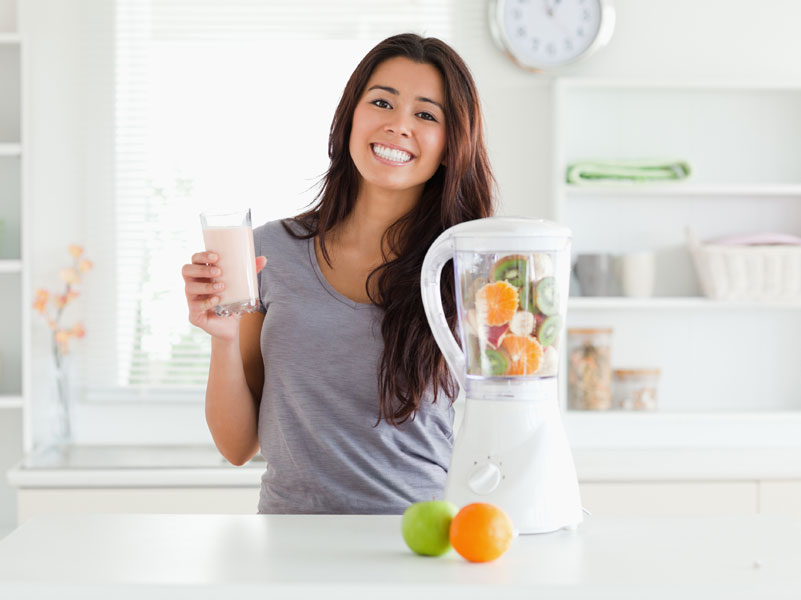Upping your daily intake of fruits and veggies can be as simple as pushing a button
Written by Jill Weisenberger
—
[dropcap]Trying to eat more fruits and vegetables? You should. Most Americans get only 59 percent of the recommended daily intake. We do even worse with fruits, meeting only 42 percent of the recommended fruit intake. It’s not hard to start your day off with a serving or two. Toss a big pile of your favorite fruits and vegetables into a juice extractor—or a powerful blender—and you’re a delicious bit closer to meeting your daily goals. [/dropcap]Juice extractors press the juice out of carrots, spinach, apples or any fruit or vegetable, and they leave the skins and fiber-containing pulp behind. If you want a thin juice, try a juice extractor. But consider that removing the pulp removes many of the nutrients as well.
Whole-food juicing is really blending. A high-speed, powerful blender, such as a Vitamix, shreds and mixes the whole fruit or vegetable, including the skins and seeds. If you want the nutrients from the whole fruit or vegetable, but don’t want a smoothie, add water to the blender before processing. Sheila Campbell, Ph.D., R.D., owner of A La Carte Food Tours, juices with a blender. The combinations are limitless, she says: “Open the refrigerator, grab any veggie and fresh fruit you find. Check the freezer for frozen fruits and vegetables. Throw it all in the juicer. Nothing is bad!”
The same recipe blueprint works for juice extractors. The combinations you make are limited only by your imagination and the food in your kitchen. Each person’s palate is different, so start by experimenting with your favorite fruits and vegetables, suggests registered dietitian and avid juicer Ashley Galloway, M.S., R.D. Instead of losing the nutrients from the pulp, Galloway tosses them into batter for homemade breads, pancakes and cookies. “It’s a good way to add some fiber into these home-baked goods.”
Juicing Like a Pro
- You can use every last bit of pulp tossed aside by a juice extractor. Fortify baked goods, casseroles and soups with this nutrient-packed by-product. If you have no other use for it, toss it into your compost pile.
- Process just enough juice to be consumed that day. Since it isn’t pasteurized, it can harbor bacteria. Start with well-washed produce and a clean machine.
- If you want to make your juice a meal, get a protein boost by adding plain Greek yogurt to your whole foods juicer.
- Do not live by juice alone. For optimal health, continue to eat whole fruits and vegetables at meals and snack times.

